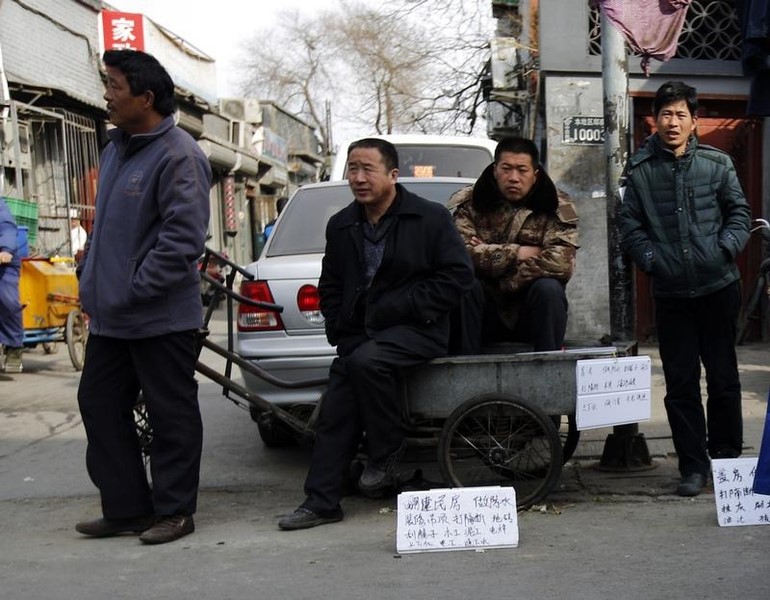By Tom Miles
GENEVA (Reuters) - Youth unemployment is coming down in rich countries but rising in China and Brazil as economic growth abates, the International Labour Organization said on Thursday.
Worldwide, the number of unemployed youth - those aged 15-24 who want to work but cannot find jobs - dropped to 73.3 million in 2014 from a peak of 76.6 million in 2009.
But the youth unemployment rate in China has risen from 9.3 percent in 2010 to 10.6 percent last year. It is projected to reach 10.8 percent this year and 11.1 percent in 2016, the ILO said.
China's youth population will actually have shrunk by a quarter over those seven years, to 181 million, but the number of young people without jobs will have dropped by only 1 million over the same period.
Azita Berar-Awad, director of the ILO's employment department, said slower growth meant fewer jobs for young Chinese who had migrated to the cities, but a surfeit of graduates was also to blame.
"They've had an explosion of university graduates in the past so many years, with investments in universities, and not all these qualified young people find jobs that meet their qualifications, even in a growing economy like China," she said.
In some other countries, more people going to university has helped reduce youth unemployment, as young people leave the labour market.
Like China, Brazil is also seeing slower economic growth. Its youth unemployment rate, 16.0 percent in 2010, has been at 14.0 percent or below for the past three years. But in the first two quarters of 2015 it averaged 15.8 percent.
"ILO modelled numbers were projecting 15.5 percent for 2015, so these numbers hint that this could come out higher. Also, bear in mind our numbers would not yet incorporate the latest more bleak economic figures of the IMF," said Sara Elder, lead author of ILO's Global Employment Trends for Youth report.
Globally, youth unemployment has been 13.0 percent for the past three years, but this year it is expected to rise for the first time since 2003, to 13.1 percent, and then rise again to 13.2 percent in 2018.
The ILO says youth unemployment matters for reasons beyond economic growth. It also affects health, civil unrest and overall levels of happiness.
The highest rates are among women in the Middle East and North Africa, at around 45 percent.

In developed economies and the European Union, the aggregate youth unemployment rate has fallen from 18.0 percent in 2012 and is projected at 16.2 percent for 2015, and to continue falling.